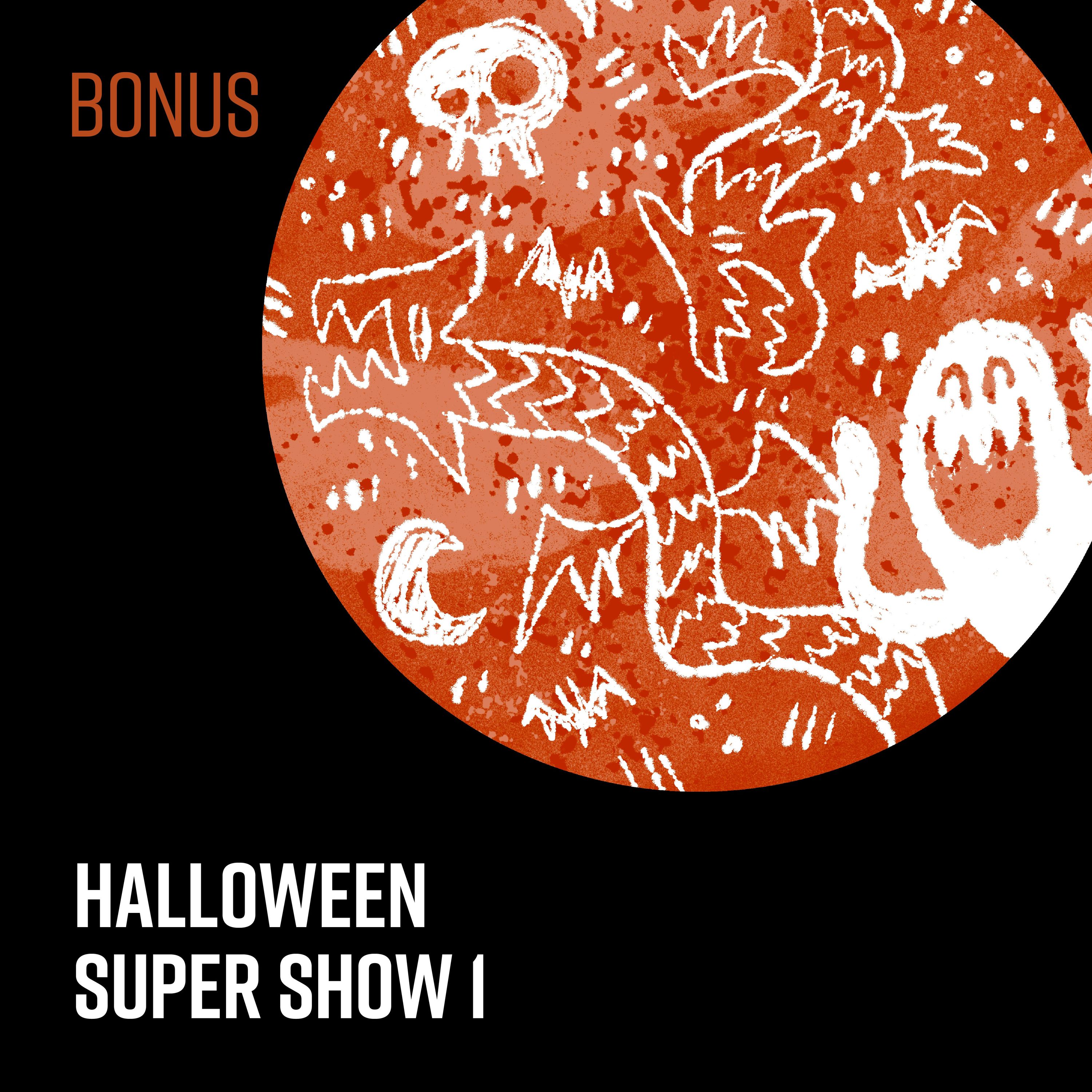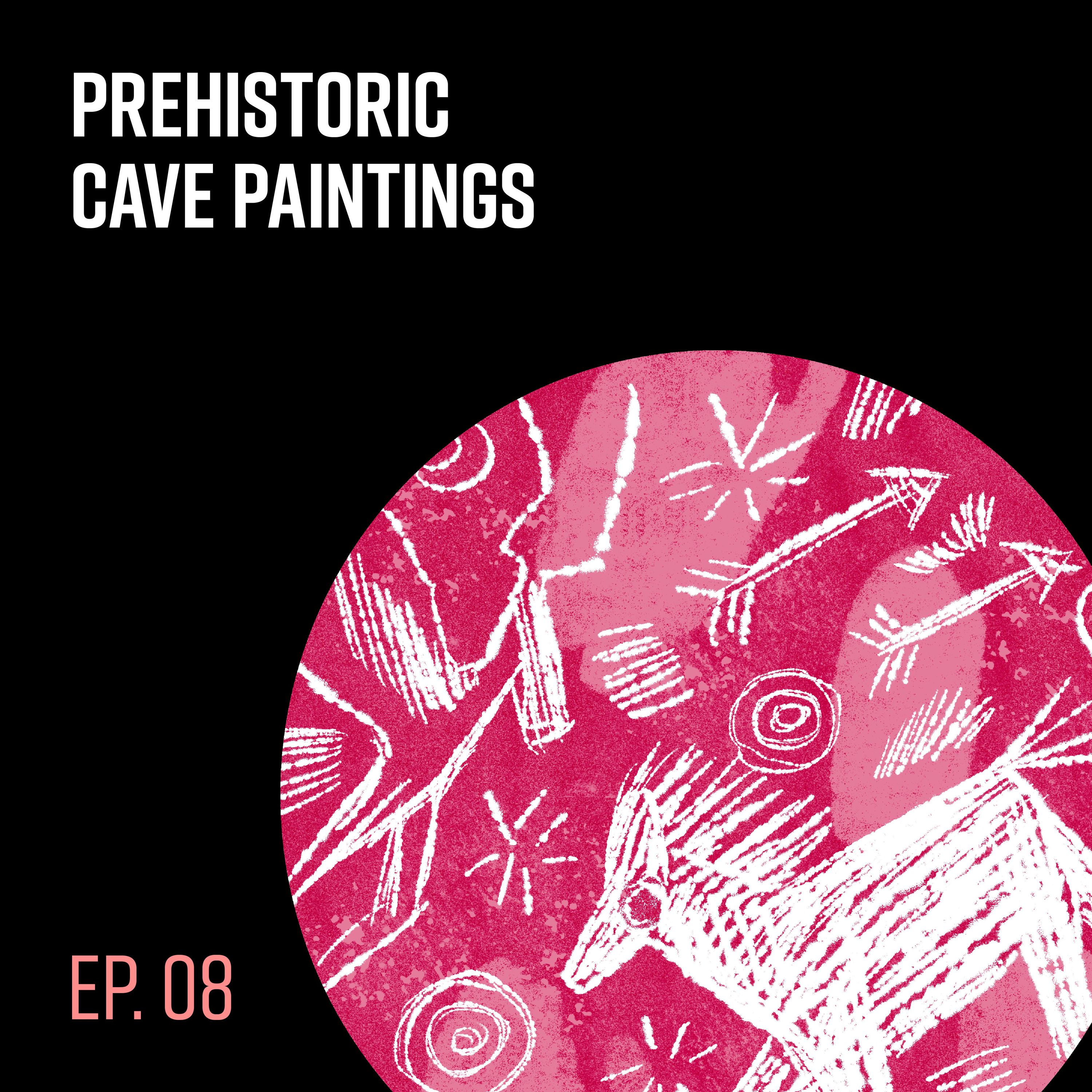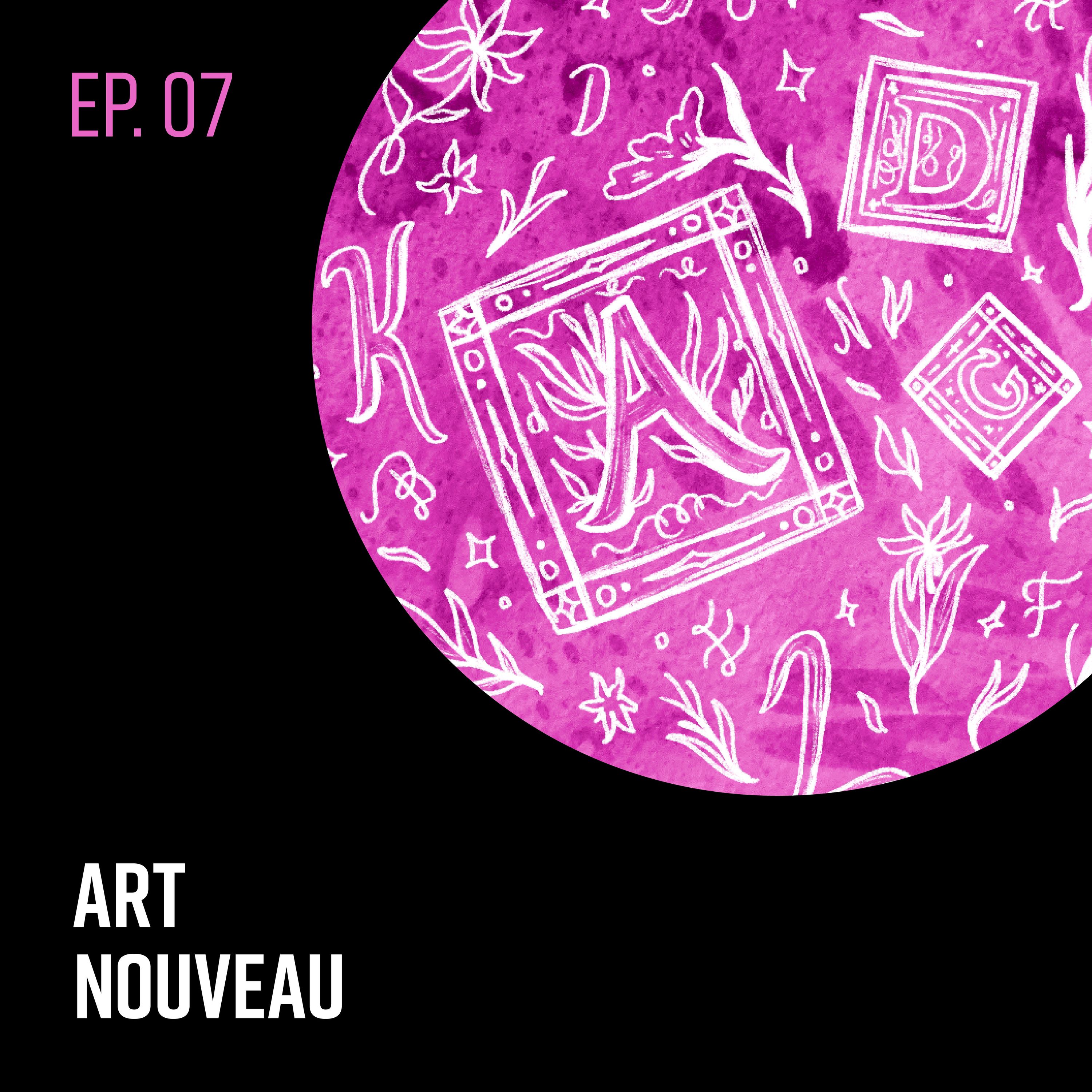Underground Comix Part 2
If it seems like the underground comix scene was a raucous and raunchy boys club, that’s fairly accurate. However, there were plenty of women artists who reacted against the sexist depictions of women in comix, of which there was plenty. Their complaints about how women were being portrayed was seen to be just more censorship heaped on the male comix artists. Rather than just be quiet and go away, women like Trina Robbins, Willy Mendes, Linda Barry, Mary Fleener, and many others started drawing, bringing their own voices into the underground comix scene. Their experience in comix wasn’t all smooth sailing either. The women creating comix also insisted on absolute artistic freedom and the space to explore difficult topics, but it came at a price just like it did for the male comix artists. Undercover police, raids, and lawsuits while not necessarily the norm, seemed to be always looming. While some comix titles managed to run longer than others, the heyday of comix was all but over by the mid 1970s. However, the influence of underground comix is evident in the comics and graphic novels being published today that are willing to have serious discussions about equally serious topics.TIMELINE1880s – Comics began publication in American newspapers 1895 – The Yellow Kid by Richard Outcault first published1914 – Krazy Kat by Geroge Herriman first published 1920s – Tijuana Bibles began to be published 1930s – Comic book began in America 1931 – Alice Schenker (born Alice Olsen) born in Racine, WI 1933 – Jerry Siegel and Joe Shuster created Superman1936-1939 – The comic magazine format became popular1936 – Victor Moscoso born in Spain 1937 – Frank Stack born in Houston, TX1938 – Gary Arlington born in San Jose, CA 1938 – Trina Robbins born in Brooklyn, NY 1939 – “She Saw The World’s Fair” published by Wesley Morse 1939 – Harvey Pekar born in Cleveland, OH 1939 – Richard “Grass” Green born in Fort Wayne, IN1940-1950s – Comic burnings became common in America 1940 – Gilbert Shelton born in Houston, TX 1940 – Manuel “Spain” Reodriguez born in Buffalo, NY 1941 – Vaughn Bodé born in Utica, NY 1941 – S. Clay Wilson (Steven Clay Wilson) born in Lincoln, Nebraska 1941 – Jack “Jaxon” Jackson born in Texas 1942 – Rand Holmes born in Nova Scotia 1942 – Dan O’Neil born 1943 – Joel Beck born in Ross, CA 1943 – Robert Williaams born in Los Angeles, CA 1944 – George Herriman dies 1944 – Howard Cruse is born in Birmingham, AL 1943 – Robert Crumb born in Philadelphia, PA 1944 – Rick Griffin born in California 1944 – Bill Griffith born 1944 – Kim Deitch born in Los Angeles, CA 1944 – Max Gaines establishes Educational Comics1944 – Mervyn “Skip” Williamson born in San Antonio, TX 1945 – Lee Mars born 1947 – Jerry Siegel and Joe Shuster sued in NY Supreme Court to regain their rights to Superman; they lose the case and their jobs at DC Comics1947 – Jay Lynch born in Orange, NJ 1947 – Max Gaines dies in a boat crash; son William Gaines takes over EC Comics1948 – Art Spiegelman born in Stockholm, Sweden 1948 – Barbara “Willy” Mendes born 1948 – Aline Kominsky-Crumb born in Long Beach, NY1949 – Marry Wings born Mary Geller in Chicago, IL 1950s – Student Press Movement starts 1950 – Educational Comics becomes Entertaining Comics under William Gaines 1950 – Gary Panter born in Durant, OK 1951 – Mary Fleener born1952-1956 – Harvey Kurtzman is the editor of MAD Magazine 1953 – Roberta Gregory born in Los Angeles, CA 1954 – “Seduction of the Innocent” by psychiatrist Frederick Werthan published 1954 – Comics Code Authority established 1954 – Victor Moscoso starts at Cooper Union Art School in Manhattan 1955 – William Gaines starts humor magazine, MAD Magazine 1955 – Charles Burns born 1956 – After being cited by the CCA, EC comics diverts resources to new title MAD Magazine 1956 – Ralph Bakshi starts animating at Terrytoons 1956 – Alice and Don Schenker marry 1956 – Lynda Barry born in Richland Center, WI 1957 – Harvey Kurtzmaan’s Trump magazine published1957 – Peter Baagge born in New York 1957-1960 – Spain Rodriguez studies at Silvermine Guild School of Art in New Canaan, CT 1958 – Moe Moskowitz moves to Bay Are and opens bookstore 1958 – Robert Crumb and his brother Charles publish satire magazine “Foo” 1958-1962 – Frank Stack and Gilbert Shelton edit University of Texas at Austin’s newspaper, The Texas Ranger 1959 – Victor Moscoso moves to San Francisco, CA 1960s – Underground comix movement started 1960 – MAD Magazine had circulation of 1.4 million 1960 – Rick Griffin met filmmaker John Severson at screening of Surf Fever movie 1960 – Harvey Kurtzman starts Help! Magazine 1960 – Phoebe Gloeckner born in Philadelphia, PA 1960 – Alison Bechdel born in Beech Creek, PA 1961 – Skip Williamson sells first comic to Help! Magazine 1961 – Daniel Clowes born in Chicaago, IL 1963 – In mainstream comics, Dell, DC and Marvel were the major publishers 1963 – Rick Griffin starts working at Surfer Magazine as a cartoonist, debuting “Murphy” 1963 – Rick Griffin is seriously injured as a passenger in a drunk driving accident 1963 – Spain Rodriguez starts work at the Western Electric Company Plant1963 – Jay Lynch moves to Chicago to become a cartoonist 1956 – America gets involved in the Vietnam War 1963 – March On Washington 1963 – President John F. Kennedy assassinated 1963 – Betty Friedan’s “The Feminine Mystique” is published1964 – Jack “Jaxon” Jackson publishes “God Nose” 1964 – After being promoted to director of cartoons at Terrytown, Ralph Bakshi left to run animation at Paramount Pictures 1962 – Frank Stack publishes “The Adventures of Jesus” 1962 – Harvey Pekar and Robert Crumb meet in Cleveland, OH and become friends and collaborators 1965 – Birth of the Underground Press 1965 – Rick Griffin picks up “Murphy” comics in Surfer after a pause 1965 – Schenkers launch Print Mint inside of Moskowitz’s bookstore 1965 – Spain Rodriguez spends summer in NYC creating cartoons for The Militant paper and joined anarchist group Resurgence Youth Movement 1965 – Robert Williams starts working as Art Director for Ed “Big Daddy” Roth 1965 – Robert Crumb starts taking LSD 1965 – Julie Doucet born in Saint-Lambert Quebec, Canada 1965-1966 – Mario Savia’s Free Speech Movement impacts Berkely’s campus 1966 – After graduating from San Francisco Art Institute, Victor Moscoso joins faculty 1966 – Art Spiegelman is Topps Bubblegum’s star artist 1966 – Spain Rodriguez has his first cover in paper East Village Other 1966 – Trina Robbins moved back to NYC from LA and worked for East Village Other as advisor and illustrator 1966 – Rick Griffin joins Jook Savages and designs posters for their art shows in San Francisco1966 – Kim Deitch moves to NYC and gets “Sunshine Girl” published in The East Village Other 1966 – Joel Beck publishes “Lenny of Laredo”, “Marching Marvin” and “The Profit” 1966 – Print Mint publishes their first comix, a reprint of Beck’s “Lenny of Laredo” 1966 – NOW, of the National Organization for Women, was formed 1966 – Underground Press Syndicate established by East Village Other editor Walter Bowart 1966 – Weekly & monthly underground papers regularly publish Underground Comix 1967 – Robert Crumb leaves Cleveland, OH, his job at Americana Greetings, and wife Dana to move to San Francisco, CA 1967 – Gilbert Shelton’s “Wonder Wart Hog” published by Pete Millar 1967 – Victor Moscoso and RIck Griffin begin to collaborate on posters and Zap Comics covers 1967 – Rick Griffin commissioned for “Pow-Wow, a Gathering of the Tribes for a Human Be-In” held in Golden Gate Park’s polo grounds 1967 – Art Spiegelman comes up with the idea for Wacky Packs working for Topps Bubblegum 1967 – “Summer of Love” takes place in San Francisco for 9 months 1967 – Bijou Funnies, initially The Chicago Mirror, founded by Skip WIlliamson and Jay Lynch in Chigaco, IL 1967 – Art Spiegelman moves to San Francisco, CA 1967 – “Cavalier” Magazine serializes Robert Crumb’s “Fritz the Cat” 1967 – First drawings of Gilbert Shelton’s The Fabulous Furry Freak Brothers appear on a flier for short student film “The Texas Hippies March on the Capitol” 1967-1973 – Jay Lynch’s “‘Nard ‘n’ Pat” comic publication years 1968 – Rand Holmes moves to Vancouver, Canada and works for Georgia Straight a weekly underground tabloid and starts “The Adventures of Harold Hedd” 1968 – S. Clay Wilson moves to San Francisco and becomes friends with Robert Crumb, starts to contribute to Zap Comics 1968 – First issue of Zap Comix by Robert Crumb released1968 – “Keep on Truckin’” one page comix published in Zap Comix by Robert Crumb 1968 – Robert Crumb sends for his wife Dana to join him in San Francisco 1968 – Robert Crumb first sees S. Clay Wilson’s comix work 1968 – Gary Arlington opens his comic book store in the Mission District in San Francisco, CA 1968 – Spain Rodriguez’s cover for Feb 2nd issue of East Village Other creates legal issues over depiction of a sexual act 1968 – Robert Crumb publishes “Zap” 1968 – Skip Williamson’s “Snappy Sammy Smoot (1968-1996) makes its debut in Bijou Funnies 1968 – Robert William’s controversial painting “Appetite for Destruction” is used as album art for the Guns ‘N’ Roses album of the same name 1968 – “Yellow Dog” comix anthology started by Joel Beck and John Thompson 1968-1973 – Skip Williamson’s Sammy Smoot character is played by Carl Reiner on the comedy TV show “Rowan and Martin’s Laugh-In” 1968-1975 – Considered the boom years of Underground Comix 1968 – Apex Novelties ran by Don Donaahue starts publishing comix 1968 – US Government outlaws LSD 1968 – Robert Crumb starts “Snatch Comix” published by Apex Novelties 1969 – Neil Armstrong lands on the moon1969-1970 – “Odd Bodkins” by Dan O’Neil is published in the San Francisco Oracle 1969 – Whitney Museum Exhibition “Human Concern/Personal Torment: The Grotesque in American Art” showed some of Robert Crumb’s work 1969 – Roger Brand at the first comic convention panel for Underground Comix artists, declined to invite Trina Robbins 1969 – Rip Off Press founded by Gilbert Shelton, Jack “Jaxon” Jackson, Dave Moriarty and Fred Todd 1969 – Kim Deitch and Trinaa Robbins start dating 1969 – Bill Griffith and Jay Kinney meet and start idea for “Young Lust” 1969 – Vaughn Bode briefly edits “Gothic Blimp Works”; Kim Deitch begins to edit “Gothic Blimp Works” 1969 – Print Mint is raided by police over “Zap Comix” fourth issue (featured “Joe Blow” incest comic by Robert Crumb) 1969 – Schenkers arrested over violation of California Penal Code Section 311.2 (illegal distribution of pornography) due to publishing “Zap Comics” fourth issue 1969 – S. Clay Wilson contributes to “Jiz Comics” under pseudonym Howard Crankwood 1970s – Graphic Novel format began1970s –Jack “Jaxon” Jackson creates historical narrative comix like “Comanche Moon”, “Los Tejanos”1970 – Ed “Big Daddy” Roth’s shop closes and Robert Williams ends his tenure as Art Director 1970 – Chris Kirkpatrick, owner of New Yorker Book Store that sold Zap Comix, convicted 1970 – Bill Griffith moves to San Francisco, CA1970 – Trina Robbins and Kim Deitch’s daughter Casey born 1970 – “It Ain’t Me Babe” the first women’s liberation newspaper, was published in Berkley 1970 – Kitchen Sink Press ran by Denis Kitchen founded 1970 – “Skull” published by Rip Off Press 1970 – Many Underground Comix artists met and created The Cartoon Workers Union1970 – Robert William released collected “Coochy Cooty Men’s Comics” published by Print Mint 1970 – Last Gasp Eco Funnies ran by Ron Turner founded 1970 – “Young Lust” by Bill Griffith and Jaay Kinney published by Company & Sons 1970 – Robert Crumb meets with Ralph Bakshi and Steve Kraantz about making a movie out of his popular character Fritz the Cat 1970 – “Abortion Eve” comic produced by Joyce Farmer and Lyn Chevely 1970 – Spain Rodriguez releases “Zodiac Mindwarp” (East Village Other) and “Subert” (Rip Off Press) 1970 – Kim Deitch and Trina Robbins end their relationship1971 – Gilbert Shelton’s Fabulous Furry Freak Brothers first released1971 – Roberta Gregory attend CSU Long Beach and contributes “Feminist Funnies” to their newspaper 1971 – S. Clay Wilson contributes to “Bent” (Print Mint) 1971 – Aline Kominsky-Crumb grates with degree in fine art from University of Arizona 1971 – “Ms Magazine” founded by Gloria Steinem and art directed by Bea Feitler 1971 – Bill Griffith’s “Zippy the Pinhead” debuts in Real Pulp Comics #1 by Print Mint 1971 – Dan O’Neil and the Air Pirates (Bobby London, Shary Flenniken, Gary Hallgren, and Ted Richards) create “Air Pirate Funnies” published by Last Gasp 1971 – Lee Marr’s “Pudge” & “Girl Blimp” published 1971 – Roberta Gregory sells her first comic to “Wimmen’s Comix” 1971 – Disney filed suit in Northern District of California against the comic artists from the “Air Pirate Funnies” 1971 – Rip Off Press moves from Mowry’s Opera House to 17th Street 1971 – After moving back to NYC, Art Spiegelman once again returns to San Francisco, CA1972 – “The Adventures of Harold Hedd” released in first collected volume, the second volume out the following year1972 – “Tits ‘n’ Clits” All women comix anthology by Joyce Farmer and Lyn Chevely published first issue (Nanny Goat Productions) 1972 – Aline Kominsky-Crumb has comix debut in “Wimmen’s Comix” #1 with “Goldie a Neurotic Woman” 1972 – Robert Crumb and Aline Kominsky-Crumb meet at a San Francisco party 1972 – “Fritz the Cat” movie directed by Ralph Bakshi released 1972 – 2 all women’s comix anthologies started “Wimmen’s Comix” (Trina Robbins, Last Gasp) and “Tit’s & Clits” (Joyce Farmer and Lyn Chevelyl, Nanny Goat Productions)1972 – Disney granted it’s injunction against Dan O’Neil and the other comic artists from “Air Pirate Funnies”; found guilty of copyright infringement and trade disparagement 1972 – “Bizzare Sex” started published by Denis Kitchen of Kitchen Sink Press 1972 – Print Mint hits 1 million issues of “Zap Comix” sold 1973 – Rand Holmes travels to San Francisco, CA to get the second volume of “The Adventures of Harold Hedd” published by Last Gasp 1973 – Bill Griffith’s “A Sour Look at the Comix Scene, or Out of the Inkwell and Into the Toilet” runs in The San Francisco Phoenix 1973 – Undercover cop buys first issue of “Tits ‘n’ Clits” at San Francisco Bookstore Fahrenheit 451; owners charged with selling pornography and Farmer and Cheverly are forced to hide from law enforcement for 2 years 1973 – Aline Kominsky-Crumb moves onto Robert Crumb’s farm property as his girlfriend 1973 – “Come Out Comix” by Mary Wings self-published 1973 – Year of the Crash of Comix 1973 – Rick Griffin is a born again Christian 1973 – Gilbert Shelton’s The Fabulous Furry Freak Brother’s comics had sold 400,000 copies; eventually selling 45 million copies to date in 16 different languages 1972 – Haavery Pekar’s first story “Brilliant American Maniacs Series No. 1 Crazy Ed” published in “People’s Comics” with art by Robert Crumb 1972 – Justin Green publishes “Binky Brown Meets the Holy Virgin Mary” 1972 – Art Spiegelman publishes first 3 pages of Maus 1973 –Supreme Court’s Miller v. California decision rules that vendors can be jailed and retroactively fined for selling obscene materials, cannot plead ignorance to contents 1974 – Jay Lynch has a one week tenure as editor at Hustler Magazine1974 – Lynda Barry attends Evergreen State College in Olympia, WA 1974 – Art Spiegelman self publishes “Ace Hole” and “Midget Detective” 1974 – Marvel releases “Comix Book” 1974 – S. Clay Wilson contributes to “Pork” (Co-Op Press) 1974 – “The Nine Lives of Fritz the Cat” directed by Ralph Bakshi released 1975 – The Schenkers working partnership with Bob and Peggy Rita dissolves and Print Mint slows down production and distribution 1975 – “Felch Comics” by Keith Green1975 – Vietnam War ends, American troops withdraw from Saigon 1975 – Victor Moscoso starts attending Yale 1975 – Bill Griffith and Art Spiegelman create “Arcade” comix anthology 1975 – Vaughn Bodé dies at age 33 1976 – Harvey Pekar self publishes “How I Quit Collecting Records and Put Out a Comic Book with the Money I Saved” with art by Robert Crumb 1976 – “Wet Satin” erotic satirical all-women’s comics anthology published by Kitchen Sink Press 1976 – Aline Kominsky-Crumb moves off of the Crumb farm commune 1976 – Mary Wing’s “Dyke Shorts” is self-published 1976 – Roberta Gregory creates “Dynamite Damsels” (Self-published) 1976 – Copyright Act becomes law 1976 – Lee Marrs “The Further Fattening Adventures of Pudge, Girl Blimp” featured the first openly bisexual character in comics 1967 – Larry Fuller creates “Gay Heartthrobs” 1976 – Harvey Pekar’s “American Splendor #1” published 1976 – Aline Kominsky-Crumb and Diane Noomin start “Twisted Sisters” 1976-1077 – Punk scene emerges1971 – Howard Cruse’s “Barefootz” first published 1977 – Kitchen Sink Press reprints Joel Becks comics under title “Joel Beck’s Comics & Stories” 1977 – Gary Panter moves to Los Angeles, CA 1977 – S. Clay Wilson releases comix with his most popular character “The Checkered Demon” (Last Gasp) 1977 – Gilbert Shelton’s character Fat Freddy’s cat from “The Fabulous Furry Freak Brothers” gets its own spin off comic 1977 – Robert Crumb divorces Dana1978 – Gilbert Shelton moves to San Francisco, CA from Austin, TX 1978 – First graphic novel “A Contract With God” by Will Eisner is published by Baronet Press 1978 – Dan O’Neils appeal in the case of Dismney and the Air Pirates does not rule in O’Neil’s favor 1978 – Gilbert Shelton makes “Shakedown Street” album cover for The Grateful Dead 1978 – Paul Mavrides starts to collaborate on “The Fabulous Furry Freak Brothers” 1979 – Gilbert Shelton and wife/agent Lora move to Europe 1979 – The Supreme Court declines to take Dan O’Neil’s appeal case against Disney 1979 – Robert William publishes “The Lowbrow Art of Robt. Williams” 1979 – Mary Wings creates drug awareness book “Are Your Highs Getting You Down?” with a California Arts Council Grant 1979 – Denis Kitchen approaches Howaard Cruse about making “Gay Comix”1979 – Rip Off Press ends1979 – Art Spiegelman starts to teach at the School of Visual Arts in NY1980 – First issue of “Gay Comix” (Kitchen SInk Press) released, edited by Howard Cruse 1980 – “Raw” comics anthology created by Art Spiegelman and Francoise Mouly 1980-1991 – Maus: A Survivor’s Tale by Art Spiegelman serialized 1981 – “Wimmen’s Comix” takes a 6 year hiatus 1981 – Daniel Clowes and his friends create “Psycho Comics” 1981 – Robert Crumb starts comix magazine “Weirdo” published by Last Gasp 1981 – Robert Crumb and Aline Kominsky-Crumb’s daughter Sophie is born; they move to Southern France1982 – Last issue of “Bizzare Sex” released 1982 – Gilbert and Jamie Hernandez create “Love and Rockets” published by Fantagraphics 1983 – “Dykes to Watch Out For” by Alison Bechdel first published 1984 – Mary Fleener self publishes her first comic “Hoodoo” 1984 – Robert Crumb passes editorship of “Weirdo” to Peter Bagge 1985 – Print Mint, since renamed Reprint Mint, is sold by the Schenkers 1985 – Mary Wings “She Came Too Late” lesbian detective novel published 1985 – Topps Bubbglegum starts Garbage Pail Kids cards 1986 – Doubleday publishes the first of it’s two collected volumes of Harvye Pekar’s “American Splendor” with the next coming out the following year 1986 – Jack “Jaxon” Jackson publishes “Illustrated History of Ranching in Texas” 1986 – Peter Bagge resigns as editor at “Weirdo”; Aline Kominsky-Crumb takes over 1987 – Robert Crumb and Aline Kominsky-Crumb marry 1988 – “Dirty Plotte” by Julie Doucet was first self-published 1988 – Roberta Gregory self publishes “Winging It” and “Sheila and the Unicorn” 1989 – Jack “Jaxon” Jackon publishes “Rip Off Pres: The Golden Era #21” 1989 – Daniel Clowes first issue of “Eightball” 1989 – Roberta Gregory moves to Seattle and begins to work at Fantagraphics Books 1990 – Art Spiegelman receives a Guggenheim Fellowship to work on Maus’ second volume 1990 – Peter Bagge first publishes “Hate” (Fantagraaphics) 1991 – American Splendor’s once a year regular release stops with issue fifteen 1991 – Rick Griffin dies after motorcycle accident 1991 – Roberta Gregory’s “Naughty Bits” issue one self published 1991 – “Dirty Plotte” published by Drawn & Quarterly 1991 – Julie Doucet moves to NYC for one year and makes “My New York Diary” 1992 – Maus: A Survivor’s Tale by Art Spiegelman wins a Pulitzer Prize 1992 – “Wimmen’s Comix” publishes it’s last issue 1993 – Don Schenkers dies1994 – Robert Williams first published “Juxtapoz Arts & Culture” Magazine1995 – “Stuck Rubber Baby” by Howard Cruse published 1995 – “Black Hole” by Charles Burns first published by Fantagraphics 1995 – “Crumb” documentary about Robert Crumb by Terry Zwigoff is released 1996 – Mary Fleener’s “Life of the Party” released 1998 – Jack “Jaxon” Jackson creates “Lost Cause” 1999 – Joel Beck dies 2001-2003 – Roberta Gregory’s popular character Bitchy Bitch from “Naughty Bits” starred in the animated cartoon “Life’s a Bitch” on Comedy Network (Canada) and Oxygen Network (US) 2001 – Daniel Clowes “Eightball” story “Ghost World” is made into a movie of the same name 2002 – Rand Holmes dies 2002 – Phoebe Gloeckner’s “The Diary of a Teenage Girl” published by Frog Books 2003 – “American Splendor” the award winning movie about Harvey Pekar’s life starring Paul Giamatti is released 2005 – “Black Hole” by Charles Burns released as graphic novel by Fantagraphics 2006 –Jack “Jaxon” Jackson dies 2006 – “Fun Home: A Family Tragicomic” by Alison Bechdel published 2010 – Harvey Pekar dies 2015 – “Fun Home” the Broadway Musical wins a Tony for best musical 2015 – “The Diary of a Teenage Girl” by Phoebe Glockner made into a movie with the same name 2017 – Skip Williamson and Jay Lynch die within a week and a half of each other 2019 – Howard Cruse dies 2020 – Alice Schnker dies 2021 – Streaming channel Tubi releases 8 episode show “The Freak Brothers” based on Gilbert Shelton’s “The Fabulous Furry Freak Brothers” 2021 – Spain Rodriguez dies 2021 – S. Clay Wilson dies 2022 – Aline Kominsky-Crumb dies REFERENCESAbout. Robert Williams Official Site. (2022). Retrieved December 27, 2022, from https://www.robtwilliamsstudio.com/aboutBeat Staff. (2016, May 11). Interview: Roberta Gregory on Mother Mountain, wimmen's comix, & bitchy bitch. Comics Beat. Retrieved December 26, 2022, from https://www.comicsbeat.com/interview-roberta-gregory-on-mother-mountain-wimmens-comix-bitchy-bitch/Bernsau, T. (2021, January 20). Car Toons for car guys. MotorTrend. Retrieved December 29, 2022, from https://www.motortrend.com/features/0908rc-the-car-toons-of-pete-millar/Chakraborty, P. (2021). "Sex and the Aesthetics of the Vulgar: Reading the Creative Paradox in the Works of Robert Crumb." Sanglap: Journal of Literary and Cultural Inquiry, 07(02), 120–148. https://doi.org/10.35684/jlci.2021.7206Chute, H. (2006, season-04). Decoding Comics. Modern Fiction Studies, 52(4), 1014–1027. https://www.jstor.org/stable/26286682Chute, H. (2019). Why Comics?: From Underground to Everywhere (Reprint). Harper Perennial.Costello, B., & Gremins, B. (2021). The Other 1980s: Reframing Comics’ Crucial Decade. Louisiana State University Press.Dalzell, T. (2020, February 20). Remembering Alice Schenker, whose Print Mint on Telegraph Avenue sparked the 1960s poster revolution. Berkeleyside. Retrieved December 26, 2022, from https://www.berkeleyside.org/2020/02/20/remembering-alice-schenker-whose-print-mint-on-telegraph-avenue-sparked-the-1960s-poster-revolutionDanky, J. P., & Kitchen, D. (2009). Underground classics: The transformation of comics into Comix. Abrams.Dauber, J. (2022). American Comics: A History. W. W. Norton & Company.Doherty , B. (2023). Dirty pictures: How an underground network of nerds, feminists, misfits, geniuses, bikers,... Potheads, printers, intellectuals, and art school. Harry N. Abraams.Ebert, R. (2005, November 20). Crumb Movie Review & Film Summary (1995): Roger Ebert. Crumb movie review & film summary (1995) | Roger Ebert. Retrieved December 22, 2022, from https://www.rogerebert.com/reviews/great-movie-crumb-1994Elam, E. (2013, February 15). Gilbert Shelton in Conversation. T_he Comics Journal ._ Retrieved December 26, 2022, from https://www.tcj.com/gilbert-shelton-in-conversation/Estren, M. J. (2012). A History of Underground Comics. Ronin Publishing, Inc.Frank, P. (2018, June 19). Mary Wings just wanted an orgasm when she created the First Lesbian Comic Book. HuffPost. Retrieved December 26, 2022, from https://www.huffpost.com/entry/mary-wings-created-first-lesbian-comic-book\_n\_5b23d937e4b0d4fc01fdd783Freeman, J. (2017, November 3). Exclusive: Gilbert Shelton reveals some Fabulous furry freak brothers secrets, new collection extracts_! downthetubes.net._ Retrieved December 21, 2022, from https://downthetubes.net/exclusive-gilbert-shelton-reveals-some-fabulous-furry-freak-brothers-secrets-new-collection-extracts/Gabilliet, J., Beaty, B., & Nguyen, N. (2013). Of Comics and Men: A Cultural History of American Comic Books(Illustrated). University Press of Mississippi.Garcia, E. (2017). The Hernandez Brothers: Love, Rockets, and Alternative Comics (Latinx and Latin American Profiles)(1st ed.). University of Pittsburgh Press.Gary Panter. Lambiek Comiclopedia . (2022, July 22). Retrieved December 16, 2022, from https://www.lambiek.net/artists/p/panter.htmGomez, B. (2017, March 29). She changed comics: Roberta Gregory interview. Comic Book Legal Defense Fund. Retrieved December 26, 2022, from https://cbldf.org/2017/03/she-changed-comics-roberta-gregory-interview/Gregory, R. (2009). My Creative History. Roberta Gregory . Retrieved December 26, 2022, from http://www.robertagregory.com/Robertagregory/Robertas\_History.htmlGriffith, B. (2002). A Bill Griffith Bibliography: (Out of Print & Hard to Find) Covers & Contents . A Bill Griffith bibliography. Retrieved December 5, 2022, from https://www.zippythepinhead.com/pages/biblio.htmlGriffith, B. (2003). Still asking the unanswerable question, 'are we having fun yet?'. Still Asking the Unanswerable Question, ‘Are We Having Fun Yet?’ Retrieved December 26, 2022, from https://imagetextjournal.com/still-asking-the-unanswerable-question-are-we-having-fun-yet/Groth, G. (2011, February 9). An interview with Victor Moscoso. The Comics Journal. Retrieved December 12, 2022, from https://www.tcj.com/an-interview-with-victor-moscoso/Hatfield, C., & Beaty, B. (2020). Comics studies: A guidebook. Rutgers University Press.Hatfield, C. (2005, August 2). Alternative Comics: An Emerging Literature (Illustrated). University Press of Mississippi.Jean-Paul, J., & Cruse, H. (2021). Stuck Rubber Baby. CASTERMAN.Jennings, J., Duffy, D., Woods, A. A., Wimberly, R., Greene, S., Richardson, A., Love, J., Love, R., & Knight, K. (2020, March 31). Black Comix Returns. Magnetic Press.Julie Doucet. _Lambiek Comiclopedia. (_2022, June 20). Retrieved December 26, 2022, from https://www.lambiek.net/artists/d/doucet.htmKaplan, A. (2010). From Krakow to Krypton: Jews and Comic Books. Jewish Publication Society.Knuddle, K. (2022, October 4). Jay Lynch. Lambiek Comiclopedia. Retrieved December 27, 2022, from https://www.lambiek.net/artists/l/lynch.htmKnuddle, K. (2022, September 27). Robert Williams. Lambiek Comiclopedia. Retrieved December 27, 2022, from https://www.lambiek.net/artists/w/williams\_r.htmKnuddle, K. (2022, September 27). Skip Williamson. Lambiek Comiclopedia . Retrieved December 3, 2022, from https://www.lambiek.net/artists/w/williamson\_skip.htmLambiek. (2022, January 20). Joel Beck. Lambiek Comiclopedia. Retrieved December 19, 2022, from https://www.lambiek.net/artists/b/beck\_joel.htmMary Fleener. Lambiek Comiclopedia. (2021, February 13). Retrieved December 26, 2022, from https://www.lambiek.net/artists/f/fleener\_mary.htmMietkiewicz, H. (2011, June 11). Holmes, Rand (1942-2002). THE JOE SHUSTER AWARDS Canadian Comics Awards, News & Links. Retrieved December 26, 2022, from https://joeshusterawards.com/hof/hof-rand-holmes-1942-2002/Milligan, M. (2021, October 19). Tubi grooves into Adult Toons with debut original 'The Freak Brothers'. Animation Magazine. Retrieved December 26, 2022, from https://www.animationmagazine.net/2021/10/tubi-grooves-into-adult-toons-with-debut-original-the-freak-brothers/Fox, M. S. (2013). Zap Comix. Underground Comix Joint. Retrieved December 29, 2022, from https://comixjoint.com/zapcomix.htmlOf the Golden Age comics houses, EC was the greatest; Weird! Incredible! Mad! (2020, September 23). The Economist. https://link.gale.com/apps/doc/A681897193/OVIC?u=edmo56673&sid=bookmark-OVIC&xid=cd9e73a6Olsza, M. (2020). Feminist (and/as) alternative media practices in women's underground comix in the 1970s 1. Polish Journal for American Studies, 14, 21-37,139. Retrieved from https://libproxy.uco.edu/login?url=https://www.proquest.com/scholarly-journals/feminist-as-alternative-media-practices-womens/docview/2473439187/se-2Pagano, K. (2012, August 18). Mary Fleener lives art on the edge. North Coast Current. Retrieved December 26, 2022, from https://www.northcoastcurrent.com/north-coast-beat/2012/08/mary-fleener-lives-art-on-the-edge/Panter, G. (2007). Biography . Gary Panter. Retrieved December 26, 2022, from http://www.garypanter.com/site/index.php/about/biography/Pencil, S. (2020). Rated Savx: The Savage Pencil Skratchbook. Strange Attractor Press.Pilcher, T., & Kannenberg Jr., G. (2008). Erotic comics : a graphic history from Tijuana bibles to underground comix. The Ilex Press Limited.Prescott, G. (2017, March 21). About: Life of the Party: An Interview with Mary Fleener. Art & Illustration by Mary Fleener. Retrieved December 26, 2022, from http://www.maryfleener.com/about/Rand Holmes. Lambiek Comiclopedia. (2021, January 16). Retrieved December 26, 2022, from https://www.lambiek.net/artists/h/holmes\_rand.htmRoberta Gregory. Lambiek Comiclopedia. (2021, January 1). Retrieved December 26, 2022, from https://www.lambiek.net/artists/g/gregory.htmRobbins, T. (1999). From girls to grrrlz : a history of [women’s] comics from teens to zines. Chronicle Books.Rosenkranz, P. (2008, May 20). Rebel Visions: The Underground Comix Revolution 1963 - 1975 (Reprint). Fantagraphics Books.Sabin, R. (2001). Comics, Comix & Graphic Novels (Revised ed.). Phaidon Press.Seigal, B. (1997, January 8). Life of the party : Cartoonist Mary Fleener draws on a zest for life and an appreciation for the world's everyday zaniness. Los Angeles Times. Retrieved December 26, 2022, from https://www.latimes.com/archives/la-xpm-1997-01-08-ls-16304-story.htmlSeves, P. R. (2018). Eric Stanton & the History of the Bizarre Underground (1st ed.). Schiffer.Smith, H. (2021, February 10). S. Clay Wilson, who helped launch the underground comix movement, dies at 79. The Washington Post Online.Szasz, F. M. (2013, September 15). Atomic Comics: Cartoonists Confront the Nuclear World (1st ed.). University of Nevada Press.Underground and Independent Comics, Comix, and Graphic Novels. (2011). Reference Reviews; Harlow, 25(6), 52–53.Wanzo, R. (2018, June 1). The Normative Broken: Melinda Gebbie, Feminist Comix, and Child Sexuality Temporalities. American Literature, 90(2), 347–375. https://doi.org/10.1215/00029831-4564334Wiggins, R. (2010, March 3). Me and Gilbert Shelton: A Memoir [web log]. Retrieved December 14, 2022, from http://theragblog.blogspot.com/2010/03/ramsey-wiggins-me-and-gilbert-shelton.html.Williams, P. (2020, January 17). Dreaming the Graphic Novel: The Novelization of Comics (None). Rutgers University Press.

29m




















































